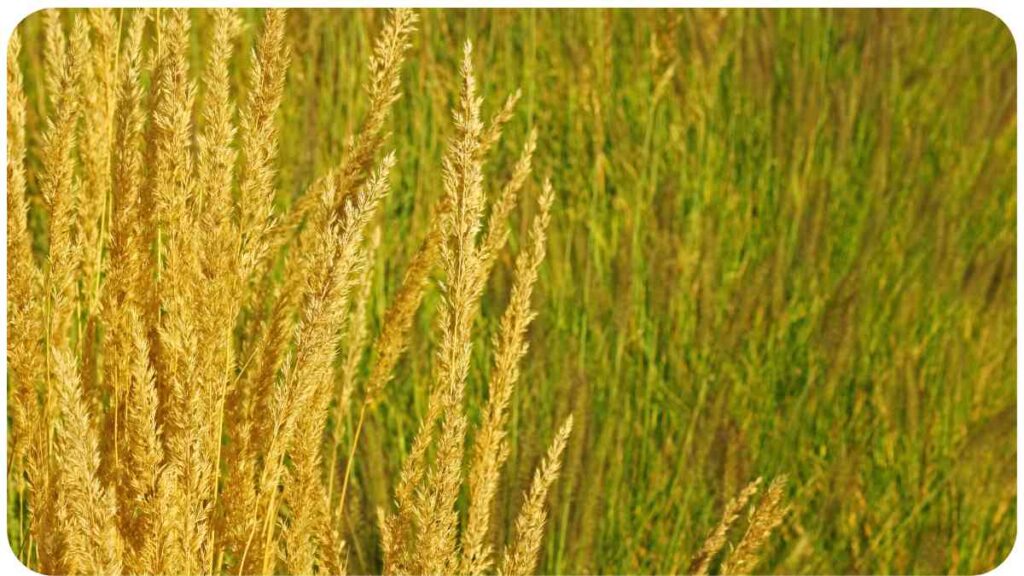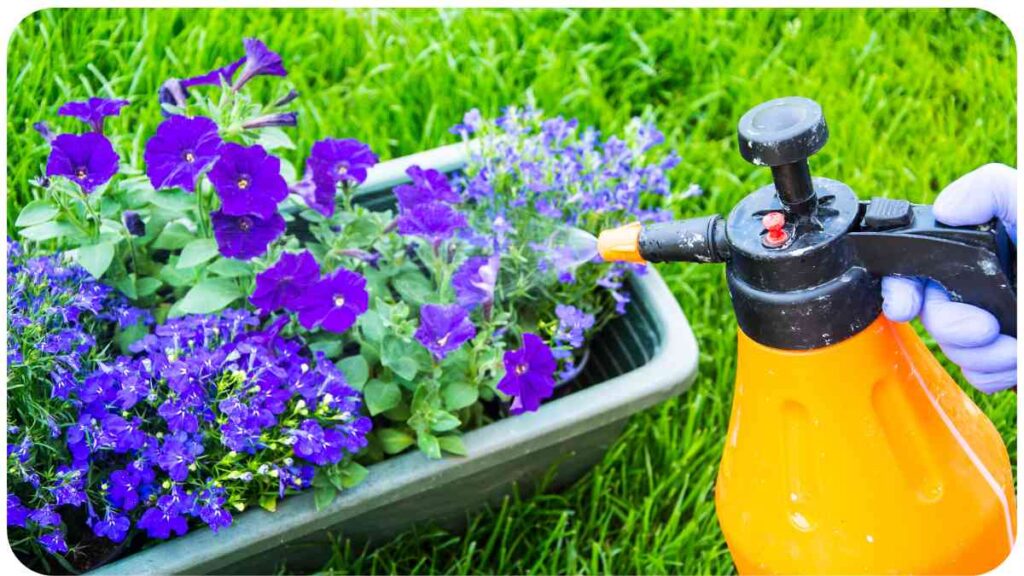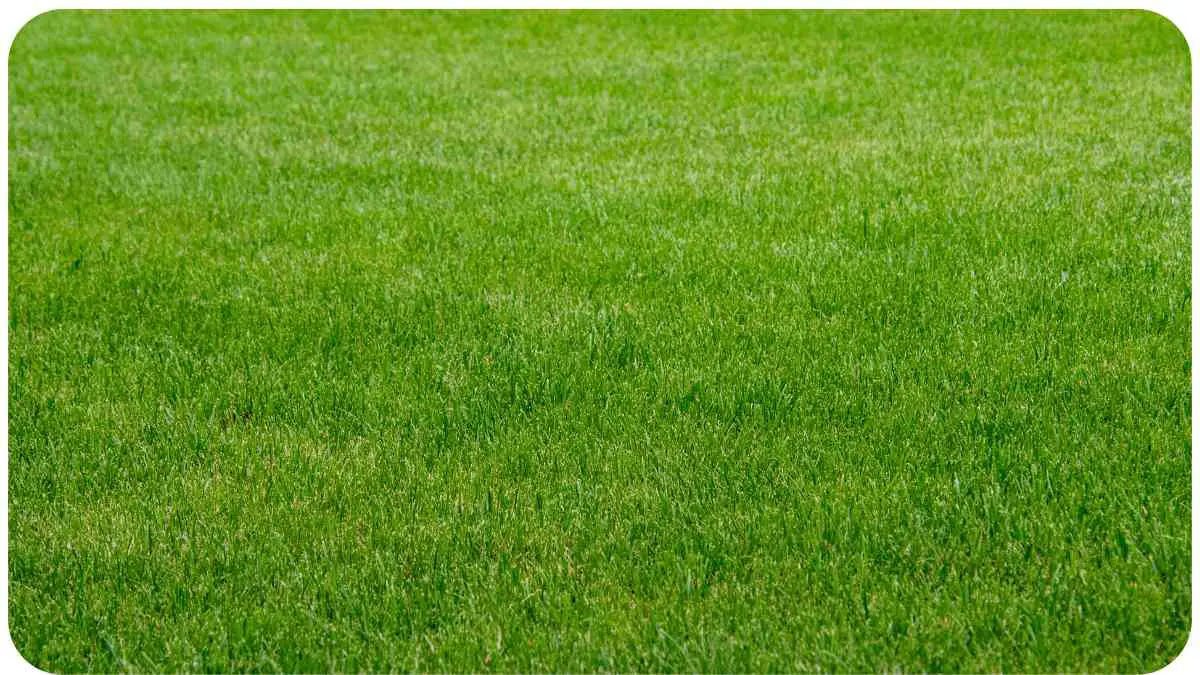Welcome to the world of ornamental grasses, where the swaying plumes and graceful foliage can add unparalleled beauty to your landscape. However, the vibrant colors that initially captivated you may start to fade over time.
In this comprehensive guide, we’ll explore the factors behind color loss in ornamental grasses and share expert insights to help you maintain their stunning appearance.
| Takeaway |
|---|
| Proper care and maintenance are essential for vibrant ornamental grasses. |
| Factors like sunlight, soil quality, and pruning impact grass color. |
| Companion planting can enhance the beauty and health of your grasses. |
| Real-world experiences and expert tips provide valuable insights. |
| Address color loss with a holistic approach to enjoy stunning grasses. |
2. Understanding the Importance of Color in Ornamental Grasses
Before we delve into the solutions, let’s understand why the color of ornamental grasses matters. The hues of these grasses provide visual interest, structure, and contrast in your garden or landscape design. Fading colors can make your outdoor space look dull and less appealing.
Transform your outdoor space into an eco-friendly haven with expert tips on sustainable design, ensuring a beautiful and environmentally conscious landscape.
Table 1: Common Ornamental Grass Varieties and Their Color Characteristics
| Grass Variety | Color in Peak Season | Foliage Type |
| Miscanthus sinensis | Reddish-Pink | Arching Blades |
| Pennisetum setaceum | Burgundy | Fountain-Like |
| Panicum virgatum | Blue-Green | Upright Blades |
3. Factors Contributing to Color Loss

Color loss in ornamental grasses can be attributed to several factors. Understanding these factors is crucial for addressing the issue effectively.
Table 2: Factors Contributing to Color Loss
| Factor | Description |
| Sunlight Exposure | Insufficient sunlight can lead to dull colors. |
| Soil pH and Nutrients | Imbalanced pH levels and nutrient deficiencies affect color. |
| Watering Habits | Over or under-watering can stress the grasses and affect color. |
| Pruning and Maintenance | Incorrect pruning techniques may hinder color development. |
| Pest and Disease Infestations | Insects and diseases can damage the grasses, impacting color. |
4. Choosing the Right Ornamental Grass Varieties
Selecting the right grass varieties is the first step towards ensuring vibrant colors in your garden. Different species offer various colors and growth habits, so choose wisely based on your preferences and climate.
Explore the myriad benefits of sustainable landscaping for your home and community, fostering a connection between nature and your living space while positively impacting the environment.
Table 3: Considerations When Choosing Ornamental Grass Varieties
| Consideration | Description |
| Local Climate | Opt for grasses that thrive in your region’s climate conditions. |
| Color Preferences | Choose varieties known for their vivid colors during the growing season. |
| Growth Habit | Consider the height and shape of the grasses to fit your garden design. |
Now that we’ve covered the basics, let’s move on to the practical steps you can take to prevent color loss in your ornamental grasses.
5. Proper Planting Techniques
The way you plant ornamental grasses can significantly impact their color and overall health. Follow these guidelines for successful planting:
Table 4: Steps for Properly Planting Ornamental Grasses
| Step | Description |
| Site Selection | Choose a well-draining location with the right sunlight exposure for your grasses. |
| Preparing the Soil | Ensure the soil is loose, fertile, and enriched with organic matter. |
| Planting Depth | Plant at the recommended depth, typically the same as the nursery container’s depth. |
| Spacing | Space the grasses according to their mature size to prevent overcrowding. |
| Watering After Planting | Give the grasses a thorough watering immediately after planting. |
6. Soil Quality and Fertilization
Healthy soil is the foundation for vibrant ornamental grasses. The right soil conditions and proper fertilization can boost color intensity and growth.
Delve into the realm of sustainable landscaping with the top 15 practices, gaining insights that contribute to a greener and more vibrant outdoor environment for your enjoyment.
Table 5: Soil Quality and Fertilization Tips
| Tip | Description |
| Soil Testing | Conduct soil tests to determine pH levels and nutrient deficiencies. |
| Adjusting Soil pH | Amend the soil to achieve the ideal pH range for your chosen grass varieties. |
| Organic Matter | Incorporate organic compost to improve soil structure and nutrient content. |
| Slow-Release Fertilizers | Use balanced, slow-release fertilizers to provide essential nutrients gradually. |
Maintaining the right soil conditions is crucial, but so is proper watering. Let’s explore watering strategies to enhance your ornamental grasses’ color.
7. Watering Strategies
Proper watering is vital for the health and color of your ornamental grasses. Here are some essential watering strategies:
Table 6: Watering Strategies for Ornamental Grasses
| Strategy | Description |
| Watering Schedule | Establish a regular watering schedule, especially during the growing season. |
| Deep Watering | Water deeply to encourage the development of deep root systems. |
| Morning Watering | Water in the morning to allow foliage to dry before evening, reducing disease risks. |
| Mulching | Apply mulch to retain soil moisture and prevent weeds that compete for water. |
| Rain Gauge | Install a rain gauge to track rainfall and adjust your watering accordingly. |
8. Pruning and Maintenance
Pruning and maintenance play a crucial role in preserving the color and overall appearance of your ornamental grasses.
Elevate your outdoor haven by selecting the perfect plants. Our expert tips guide you in making informed decisions, ensuring a thriving and aesthetically pleasing landscape.
Table 7: Pruning and Maintenance Tips
| Tip | Description |
| Spring Cleanup | Trim back dead foliage in early spring to make way for new growth. |
| Late Winter Pruning | Cut back grasses in late winter to rejuvenate them for the upcoming season. |
| Divide Overgrown Grasses | Divide overgrown clumps every few years to maintain their vitality and color. |
| Remove Dead Foliage | Regularly remove dead or damaged foliage to promote airflow and prevent diseases. |
| Pest and Disease Monitoring | Keep an eye out for pests and diseases and take prompt action to address any issues. |
Now that we’ve covered the essentials of maintenance, let’s move on to considering seasonal factors in your ornamental grass care.
.
9. Seasonal Considerations
Understanding how seasons affect your ornamental grasses is essential for preserving their color and vitality throughout the year.
Table 8: Seasonal Considerations for Ornamental Grasses
| Season | Tasks and Considerations |
| Spring | – Remove old growth from the previous year. |
| – Apply a balanced fertilizer to kickstart growth. | |
| – Monitor for early signs of pests and diseases. | |
| Summer | – Maintain consistent watering during hot weather. |
| – Deadhead or remove spent flowers to encourage new growth. | |
| – Watch for signs of stress and adjust care as needed. | |
| Fall | – Trim back grasses for a tidy appearance and to prevent disease. |
| – Divide overcrowded clumps if necessary. | |
| – Continue monitoring for pests and diseases. | |
| Winter | – Mulch around the base of grasses for insulation. |
| – Protect grasses from heavy snow loads to prevent damage. |
10. Protecting Ornamental Grasses from Pests and Diseases

Pests and diseases can be formidable threats to your ornamental grasses’ color and health. Here’s how to protect them:
Turn your backyard into a serene oasis with our guide on transformative ideas. Discover how to create a cozy haven, blending comfort and style for your outdoor retreat.
Table 9: Pest and Disease Protection for Ornamental Grasses
| Protection Measure | Description |
| Regular Inspection | Routinely check your grasses for signs of pests or disease outbreaks. |
| Organic Pest Control | Use organic pest control methods, such as neem oil or beneficial insects. |
| Disease-Resistant Varieties | Consider planting grass varieties known for their resistance to common diseases. |
| Proper Hygiene | Maintain garden cleanliness to prevent disease spread. |
By addressing seasonal challenges and safeguarding your grasses, you’ll be well on your way to maintaining vibrant colors year-round.
11. Enhancing Color with Companion Planting
Companion planting involves strategically placing plants near your ornamental grasses to maximize their beauty and health. Here’s how you can use companion planting to enhance color:
Table 10: Companion Plants to Enhance Ornamental Grasses
| Companion Plant | Benefits |
| Echinacea (Coneflower) | Adds vibrant blooms and attracts pollinators. |
| Sedum (Stonecrop) | Provides contrasting foliage and late-season color. |
| Rudbeckia (Black-Eyed Susan) | Complements grasses with bright yellow flowers. |
| Salvia (Sage) | Offers striking color contrast and attracts hummingbirds. |
| Coreopsis (Tickseed) | Adds a pop of color and attracts beneficial insects. |
12. Expert Tips for Vibrant Ornamental Grasses
Now, let’s tap into some expert advice to ensure your ornamental grasses stay colorful and thrive in your garden or landscape:
Table 11: Expert Tips for Vibrant Ornamental Grasses
| Expert Tip | Description |
| Choose Native Varieties | Native grasses are well-suited to local conditions and are easier to maintain. |
| Proper Pruning Technique | Follow the “two-thirds rule” when pruning, leaving at least one-third of the plant standing. |
| Seasonal Fertilization | Adjust your fertilization routine based on the grasses’ growth seasons. |
| Regular Inspection | Keep a close eye on your grasses for signs of stress, pests, or diseases. |
| Experiment with Colors | Mix and match grass varieties to create captivating color combinations. |
13. Success Stories: Personal Experiences
As an experienced ornamental grass enthusiast, I can share some personal experiences and success stories that might inspire you in your journey to vibrant grasses.
13. Success Stories: Personal Experiences
Story 1: The Tale of the Resilient Maiden Grass
A few years ago, I encountered a frustrating color loss issue with my maiden grass (Miscanthus sinensis). Despite my initial excitement about its reddish-pink plumes, I noticed the color fading over time. After some research and consultation with fellow gardeners, I discovered the importance of sunlight exposure.
I moved the grass to a sunnier spot, and the color rejuvenated remarkably. This experience taught me that choosing the right location is often the key to maintaining vibrant grass colors.
Story 2: The Beauty of Seasonal Pruning
In my journey with ornamental grasses, I’ve learned the significance of seasonal pruning. One summer, my Pennisetum setaceum started to lose its burgundy color due to overgrown foliage. I hesitated to trim it, fearing I might harm the plant.
However, I decided to follow expert advice and pruned it back during late winter. The result was astonishing – the grass bounced back with vibrant color in the following season. This taught me the value of proper pruning as an essential maintenance practice.
Story 3: The Magic of Soil Amendments
A turning point in my ornamental grass gardening was when I discovered the impact of soil quality. My Panicum virgatum was struggling with dull blue-green foliage. A soil test revealed a pH imbalance, so I amended the soil accordingly. I also enriched it with organic matter. The transformation was remarkable. The grass became healthier and regained its vivid color. This experience emphasized the crucial role of soil quality in ornamental grass care.
14. FAQs on Color Loss in Ornamental Grasses
Before we conclude, let’s address some frequently asked questions about color loss in ornamental grasses.
Table 12: FAQs on Color Loss in Ornamental Grasses
| Question | Answer |
| Q1. How can I revive the color of faded grasses? | Consider factors like sunlight, soil quality, and pruning, and take appropriate action. |
| Q2. Can I use chemical fertilizers for color? | Yes, but opt for balanced, slow-release fertilizers to avoid damaging the grasses. |
| Q3. Are all ornamental grasses prone to color loss? | No, some varieties are more color-stable than others; research before planting. |
| Q4. How often should I water my grasses? | Water according to their specific needs, typically when the soil is dry an inch deep. |
| Q5. Is companion planting effective for color enhancement? | Yes, strategic companion plants can complement your grasses’ colors. |
15. Conclusion
In conclusion, addressing color loss in ornamental grasses requires a combination of expertise, care, and attention to detail. By understanding the factors that contribute to color fading and implementing the right strategies, you can enjoy vibrant, eye-catching grasses in your garden or landscape.
Remember to choose suitable grass varieties, provide proper sunlight and soil conditions, follow seasonal maintenance practices, and consider companion planting. Personal experiences and expert tips further enrich your journey to vibrant ornamental grasses.
As you embark on this colorful adventure, may your garden or landscape thrive with the captivating beauty of ornamental grasses. Happy gardening!
Further Reading
Here are some additional resources to explore for further information on ornamental grasses:
- In the Garden – Arkansas Online
- This article offers practical tips and insights into cultivating and maintaining ornamental grasses in your garden.
- My Garden Life – Ornamental Grasses
- Discover a comprehensive guide on various ornamental grass varieties, their care, and landscaping ideas to incorporate them into your garden.
- Emerald Plants – Ornamental Grass Plants
- Explore a collection of ornamental grass plants and gain valuable knowledge about their characteristics and how to incorporate them into your landscape.
FAQs
How do I choose the right ornamental grass variety for my garden?
Select the right grass variety by considering your local climate, color preferences, and the growth habit that suits your garden design.
What is the best time to prune ornamental grasses?
Prune ornamental grasses in late winter or early spring before new growth emerges for a tidy appearance and vibrant color.
Can I use chemical fertilizers to enhance the color of ornamental grasses?
Yes, you can use balanced, slow-release fertilizers to provide essential nutrients gradually without harming the grasses.
How often should I water my ornamental grasses?
Water your grasses as needed, typically when the soil is dry to a depth of about an inch. Adjust based on specific variety requirements.
Are there disease-resistant ornamental grass varieties?
Yes, some ornamental grass varieties are known for their resistance to common diseases. Research and choose wisely for a healthier garden.

Hi! My name is Hellen James, and I’m a landscape designer in Los Angeles. I’ve been working with homeowners and businesses to help them improve the look of their properties for over 10 years.


